Butter, the golden elixir of the culinary realm, holds a cherished place in kitchens around the globe. But did you know that this delectable dairy delight comes in a mesmerizing array of types and flavors?
While butter makes everything better and leaves your taste buds desiring more, different types of butter are made using slightly different methods and ingredients. As a result, each offers its unique flavor and texture that can alter the end results of your cooking and baking efforts. We've rounded up 16 common types of butter below to ensure you select the best butter every time.
16 Types of Butter to Use in the Kitchen
1. Unsalted Butter
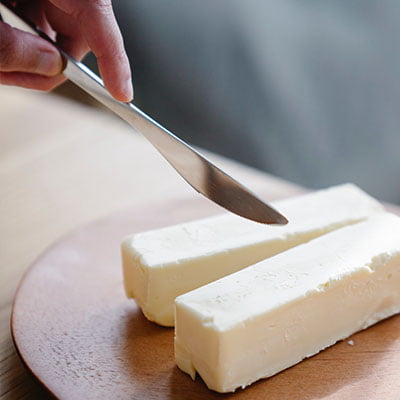
Unsalted butter is butter in its purest form. It contains no added salt, just rich, creamy butter. Salt acts as a preservative, so unsalted forms of butter have a shorter shelf life than their salted counterparts.
The biggest advantage of using unsalted butter instead of salted butter is that it provides better control over your dish's sodium level and overall flavor. Its purity and neutral flavor make it a popular choice for cakes, cookies, pastries, and other baked goods. You'll sometimes see unsalted butter referred to as sweet butter.
Unsalted Butter Taste
Neutral and a little sweet, creamy flavor
Unsalted Butter Uses
Unsalted butter is often used in baked goods.
2. Salted Butter
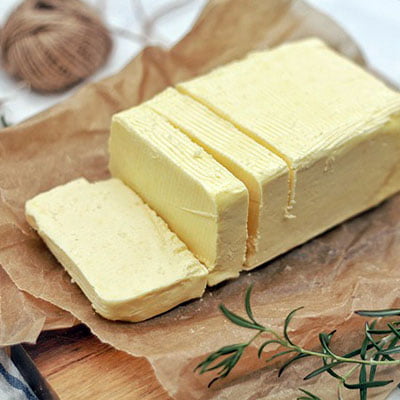
Salted butter is exactly what it sounds like: butter with salt added. Thanks to the added salt, it has a longer shelf life than unsalted varieties. While salt was added primarily as a preservative in the past, it's now added to boost flavor. As a result, salt levels vary widely from product to product.
While salted butter isn't great for precise baking, it's ideal for spreading on bread, potatoes, pasta, vegetables, and other savory foods. You can easily swap salted and unsalted butter as long as you adjust the amount of added salt called for in the recipe.
Salted Butter Taste
A saltier taste, cream flavor.
Salted Butter Uses
Best for cooking like sautéing, making sauces, spreading on toast, or melting it on homemade pancakes or waffles.
3. Organic Butter
Organic butter comes from dairy cows that do not contain antibiotics or growth hormones and are fed 100 percent organic feed without synthetic fertilizers or pesticides. To be certified organic butter, the operated farms and facilities need to meet USDA standards. You can find organic as salted or unsalted.
Organic Butter Taste
Rich, mildly tangy flavor, Smooth, And Slightly Sweet or Salty
Organic Butter Uses
Organic butter can be used the same way as salted or unsalted butter.
4. Sweet Cream Butter
Ever wondered why the squares of butter served at restaurants taste different than other types of butter? That's because it's sweet cream butter, a popular American butter made from pasteurized fresh cream instead of cultured cream. Despite the name, it isn't any sweeter or creamier than traditional butter. The name simply differentiates it from European-style. Thanks to its versatility and mild flavor, sweet cream butter is used for everything from baking to cooking to slathering on pancakes, waffles, and toasted bread.
Sweet Cream Butter Taste
Mildly sweet (unsalted), the flavor can intensify when heated and offer a honey note.
Sweet Cream Butter Uses
Great for smearing on toast, making sauce, and baked goods. Salted can be used to smear on biscuits or corn on the cob.
5. Cultured Butter
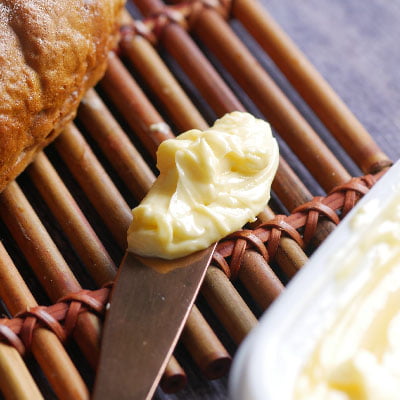
Just like yogurt or sour cream, cultured butter is made from fermented cream, or after the pasteurization process, it is added with live bacterial cultures. Allowed it to ferment and then churn to creamy perfection. Lactic acid is produced during the fermentation process, increasing the acidity level of the butter. This creates a noticeable tangy flavor that brings depth to the flavor profile of almost any dish. Different cultured butters have different flavors and tanginess, depending on the type of cultures used and the length of fermentation time.
Cultured Butter Taste
Fuller flavor with tangy notes
Cultured Butter Uses
Often used to make desserts like coffee cakes, in soups, or smeared on toast.
6. Margarine
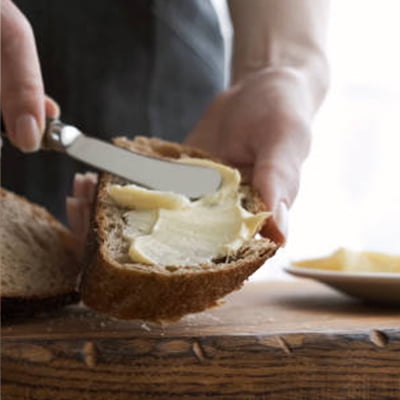
Let's make something clear: margarine is not butter, but some refer to them as "spreadable butter". Margarine is a processed food that acts as a dairy-free butter alternative. Unlike butter, it's made from vegetable oil instead of fresh sweet cream. Though often praised for being 'heart-healthy,' it's highly processed and packed with hydrogenated oils and trans fat. While margarine has a similar flavor and consistency, it's nowhere near as rich and creamy as the real thing.
Margarine Taste
Creamy with an oily aftertaste
Margarine Uses
Margarine is best for spreading on toast, pancakes, waffles, baked goods, or dolloped on mashed potatoes.
7. Vegan Butter
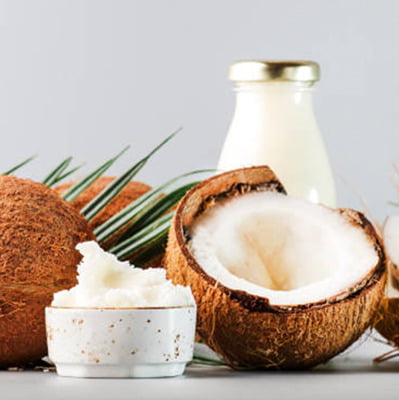
These days, there's a growing number of plant-based butters to be found on grocery shelves. Instead of using cow's milk, vegan butter is made from a combination of water, plant-derived oil, salt, and natural flavoring. Thanks to its plant-based ingredients, it's vegan-friendly and lactose-free. It comes in both salted and unsalted versions that are versatile enough to be used in all kinds of vegan baking and cooking.
Vegan Butter Taste
Real butter-like flavor with an oily note aftertaste
Vegan Butter Uses
Vegan butter can be used the same way as salted and unsalted butter.
8. Clarified Butter
Clarified butter is created by removing the milk solids and water in regular butter, leaving behind only the butterfat. As a result, it has a longer shelf life and a higher smoke point, making it an excellent choice for cooking at high temperatures. Removing the solids and other impurities also creates a more intense butter flavor with a smooth, silky texture that's impossible to resist. While you can purchase clarified butter at most grocery stores, it's relatively easy to clarify butter at home.
Clarified Butter Taste
Most intense creamy and butter taste with grassy, roasted, and nutty notes.
Clarified Butter Uses
Great for sautéing, making sauces, and making buttery popcorn.
9. Ghee Butter
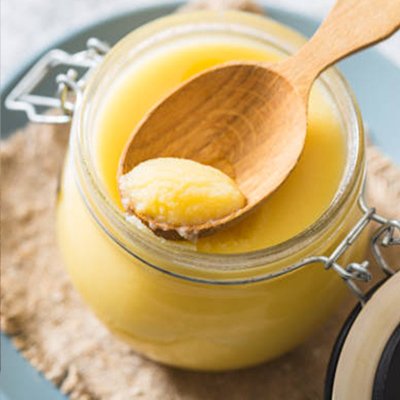
Ghee is a type of Indian clarified butter with a higher smoking point and longer shelf life. Though a trendy item today, it's been used in cooking and medicine for centuries. Ghee is high in heart healthy fats, vitamins, and antioxidants and free from sodium and preservatives. It also contains significantly less lactose than standard butter, making it an excellent choice for butter-lovers with dairy sensitivities. Like clarified option, it's created by simmering unsalted solid butter until water evaporates and removes any impurities, then skimming off the solids.
Ghee Butter Taste
More buttery than other butter and has a nutty flavor.
Ghee Butter Uses
A staple ingredient in Indian and Thai cooking. Perfect searing, sautéing and making dessert.
10. Grass-Fed Butter
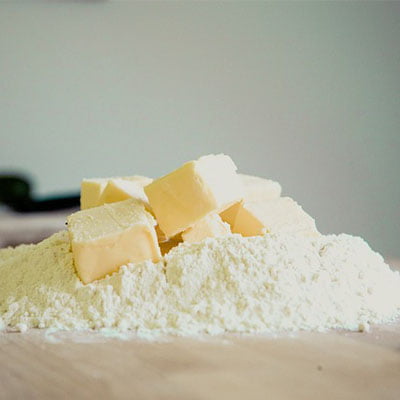
Just like grass-fed beef, grass-fed butter is known for being higher-quality and better for your health. Its bright yellow color and rich flavor are often compared to liquid gold.
Most basic butter on grocery shelves comes from cows fed a diet of grains and growth hormones. But grass-fed butter is different. It's made from milk or cream produced by pasture-raised cows that eat a diet of primary grass. As a result, it boasts a higher proportion of unsaturated fats, vitamin A, vitamin K, and a vital antioxidant called beta carotene. Though grass-fed butter is a bit pricier than other butter, it's worth it for the more ethical production methods and added health benefits.
Grass-Fed Butter Taste
Rich and creamy
Grass-Fed Butter Uses
Grass-fed butter is great for roasting or baking.
11. European-Style Butter
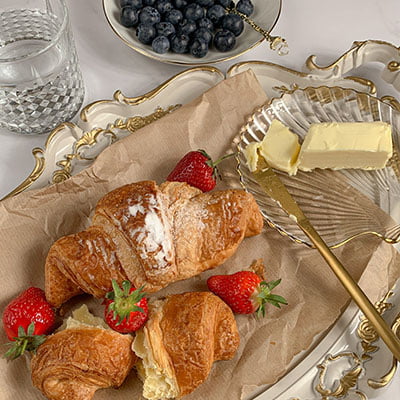
Any true butter enthusiast will tell you that the European-style is far superior to sweet cream butter used here in the States. European butter is generally made from cultured unpasteurized cream churned longer to produce a higher fat content and a richer, creamier end result. The average American butter has a milk fat content of around 80%, while European-style has a milk fat content above 82%. One of the common types of European butter is grass-fed Irish butter, which is known for its rich flavor, extra-creamy consistency, and bright yellow color.
European-Style Butter Taste
Rich, creamy, with a slight tang
European-Style Butter Uses
European style butter is great for baking to make desserts like croissants, puff pastry, pie crust, eclairs, and brioche.
12. Amish Butter
Amish butter is undoubtedly one of the most delicious types of butter out there. Traditionally, it's slow-churned in small batches and hand-rolled into large logs. This careful churning process creates a higher fat content than normal butter resulting in a richer buttery flavor that's hard to resist. It's available in both salted and unsalted varieties, making it a great alternative to boring butter cubes.
Amish Butter Taste
Rich, milky, slightly tangy, and incredibly creamy
Amish Butter Uses
Because Amish butter has higher fat, it is often used in recipes whose flavor relies on butter. Amish butter is used in baked goods like whoopie pies, butter cookies, pie crust, and more.
13. Whipped Butter
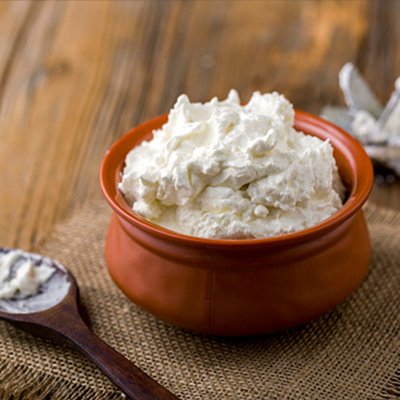
Whipped butter offers all the delicious, buttery flavor you love with fewer calories. The light butter is also easier to spread and melts faster. While you can purchase pre-made whipped butter, it's incredibly easy to make it yourself. Just whip at room temperature, soften butter using an electric mixer until it's light and fluffy. Some people have a splash of water, milk, or nitrogen gas whipped into it to get a fluffier and airier spreadable. And because it contains more air, whipped can't be substituted for regular butter in recipes.
Whipped Butter Taste
Light, airy, mild flavor
Whipped Butter Uses
Whipped butter can be used as a table spread or topping on toast, waffles, or pancakes.
14. Brown Butter
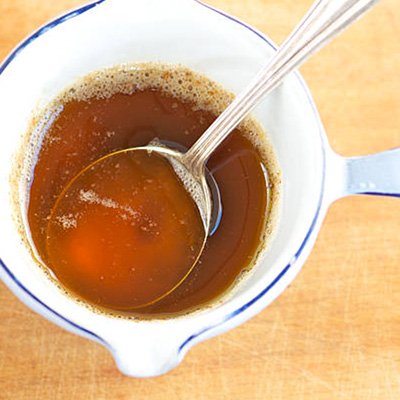
Brown butter is a unique type of butter made from regular butter that's been cooked slightly past the melting point. The rich, brown color is created by toasting the milk solids in the melted butter to create a complex, nutty flavor. Browned butter brings a delicious caramelized finish to pasta, seafood, vegetables, baked goods, and anything else you can dream up in the kitchen. It's easy to make at home using a few sticks of butter that are about to expire.
Brown Butter Taste
A nutty flavor with caramel notes
Brown Butter Uses
Brown butter can be used to replace regular butter in baked goods. Great for baking and making savory sauces.
15. Compound Butter
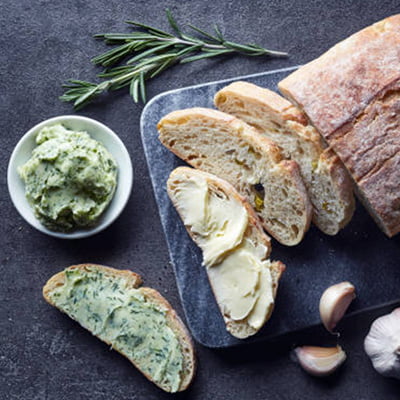
Compound butter, known as flavored butter, is softened butter blended with herbs, garlic, spices, or honey. It is creamy, and it is packed with flavor. You can use the seasoned butter as a flavoring in almost any dish or as a spread for baked goods.
Compound Butter Taste
Flavorful. Taste is based on the type of herbs, spices, or the amount of honey you use.
Compound Butter Uses
Compound butter is perfect for finishing a cooked dish or making a quick pan sauce. You can also make a sweet compound butter and add it on top of warm desserts.
16. Goat Butter
Goat butter is a type of butter made from the milk of goats, rather than cows. While cow's milk butter is more common and widely consumed, goat butter has its own distinct qualities and is appreciated by those who enjoy the flavor and characteristics specific to goat's milk.
Goat Butter Taste
Slightly tangy, earthy, and "goaty."
Goat Butter Use
Often used as a spread, in baking, cooking, or as a flavorful ingredient in various dishes.
Types of Butter FAQs
What's the Difference between White and Yellow Butter?
The difference between white butter and yellow butter is the presence of beta carotene. The higher the beta carotene, the more yellow it is. Grass-fed cows typically have much higher beta carotene than cows fed hay and grains.
What is the difference between salted butter and unsalted butter?
Salted butter contains added salt, which enhances the flavor and acts as a preservative. Unsalted varieties are devoid of additional salt, granting greater control over the sodium levels in recipes.
What is clarified butter, and how is it different from regular butter?
Clarified butter is made by melting butter and separating the milk solids and water from the pure fat. This results in a golden liquid with a higher smoke point, making it suitable for high-heat cooking and frying. Conventional butter comprises milk solids and water, which can potentially burn when exposed to high temperatures.
What is the difference between cultured butter and regular butter?
Cultured butter is created through the process of fermenting cream prior to churning, resulting in a subtly tangy flavor profile. Regular butter is made by churning cream without the fermentation step. The cultured variation is highly favored in European cuisine.
What is the difference between European-style butter and regular butter?
European-style typically contains a higher fat content compared to regular butter. Renowned for its indulgent and velvety texture, it has gained popularity in baking and pastry-making.
Is goat butter a suitable alternative for people with lactose intolerance?
Goat butter contains less lactose than cow's milk butter, making it potentially easier to digest for individuals with lactose intolerance. Nevertheless, it is always recommended to seek personalized advice from a healthcare professional or dietitian.
